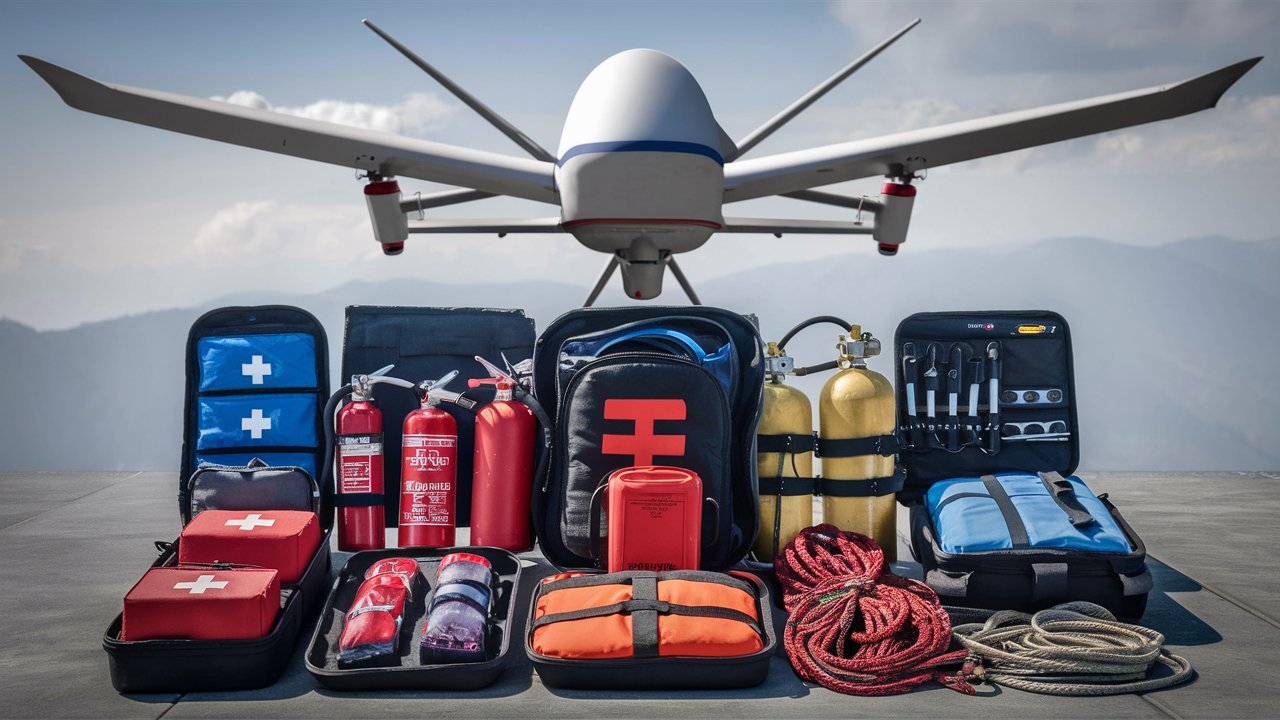When operating remotely piloted aircraft systems (RPAS), commonly known as drones, ensuring safety is paramount. While pre-flight checks and careful planning are essential, having the right emergency equipment can be a lifesaver in unexpected situations. In this article, we’ll explore the critical emergency equipment every RPAS operator should have on hand.

- Introduction
- Understanding RPAS Operations
- Importance of Emergency Equipment
- Essential Emergency Equipment for RPAS Operations
- Emergency Communication Devices
- Backup Power Sources
- First Aid Kit
- Fire Extinguisher
- Emergency Flotation Devices
- Emergency Locator Transmitter (ELT)
- Tool Kit
- Training and Familiarity
- Legal Requirements
- Maintenance and Inspection
- Conclusion
- FAQs
Understanding RPAS Operations
RPAS operations involve the use of unmanned aircraft for various purposes, including photography, surveillance, and delivery. These operations can take place in diverse environments and conditions, making preparedness crucial for mitigating risks.
Importance of Emergency Equipment
Despite meticulous planning, emergencies can arise during RPAS operations. Equipment failure, adverse weather conditions, or unexpected obstacles can all pose threats to the safety of the aircraft and those in its vicinity. Having the appropriate emergency equipment can significantly enhance response capabilities and minimize potential damage or harm.
Essential Emergency Equipment for RPAS Operations
- Emergency Communication Devices: Reliable communication is essential for coordinating responses to emergencies. Portable radios or satellite phones can facilitate communication with ground personnel or other operators.
- Backup Power Sources: In the event of a power failure, backup batteries or generators can provide additional flight time or power essential systems such as navigation lights and communication devices.
- First Aid Kit: Accidents can happen, and having a well-equipped first aid kit onboard can make a crucial difference in treating injuries until professional medical help arrives.
- Fire Extinguisher: Lithium-ion batteries used in RPAS can pose a fire risk, especially in the event of a crash or malfunction. A fire extinguisher rated for electrical fires should be readily accessible to mitigate this risk.
- Emergency Flotation Devices: For RPAS operations over water, flotation devices can prevent the aircraft from sinking in case of a water landing, allowing for potential recovery.
- Emergency Locator Transmitter (ELT): An ELT broadcasts a distress signal on a designated frequency in the event of a crash, aiding search and rescue efforts by pinpointing the aircraft’s location.
- Tool Kit: Basic tools such as screwdrivers, pliers, and spare parts can enable on-site repairs and troubleshooting, reducing downtime in case of minor malfunctions.

Training and Familiarity
Simply having emergency equipment onboard is not sufficient; operators must also be trained in its use and familiarize themselves with emergency procedures. Regular drills and simulations can help ensure quick and effective responses when faced with real emergencies.
Legal Requirements
Regulatory authorities often mandate the presence of specific emergency equipment for RPAS operations, depending on the intended use and operating environment. Operators must comply with these requirements to ensure legal and regulatory compliance.
Maintenance and Inspection
Regular maintenance and inspection of emergency equipment are essential to ensure its reliability and effectiveness when needed. Batteries should be checked for charge, expiration dates on medical supplies should be monitored, and firefighting equipment should be serviced according to manufacturer recommendations.
Conclusion
In conclusion, having the right emergency equipment is indispensable for ensuring the safety and success of RPAS operations. From communication devices to flotation devices, each piece of equipment plays a crucial role in mitigating risks and responding effectively to emergencies. By prioritizing preparedness and compliance with regulations, RPAS operators can enhance safety standards and build trust within the industry.
FAQs
- Why is emergency equipment necessary for RPAS operations?
- Emergency equipment provides operators with the tools and resources needed to respond effectively to unexpected situations, thereby enhancing safety.
- Are there specific regulations governing the use of emergency equipment in RPAS operations?
- Yes, regulatory authorities often mandate the presence of certain emergency equipment depending on factors such as the type of operation and operating environment.
- What training is required for using emergency equipment during RPAS operations?
- Operators should undergo training in the proper use of emergency equipment and familiarize themselves with emergency procedures through regular drills and simulations.
- Can emergency equipment help prevent accidents during RPAS operations?
- While emergency equipment cannot entirely prevent accidents, it can mitigate their impact and improve response capabilities, potentially reducing the severity of accidents.
- How often should emergency equipment be inspected and maintained?
- Emergency equipment should undergo regular inspection and maintenance according to manufacturer recommendations to ensure reliability and effectiveness.

